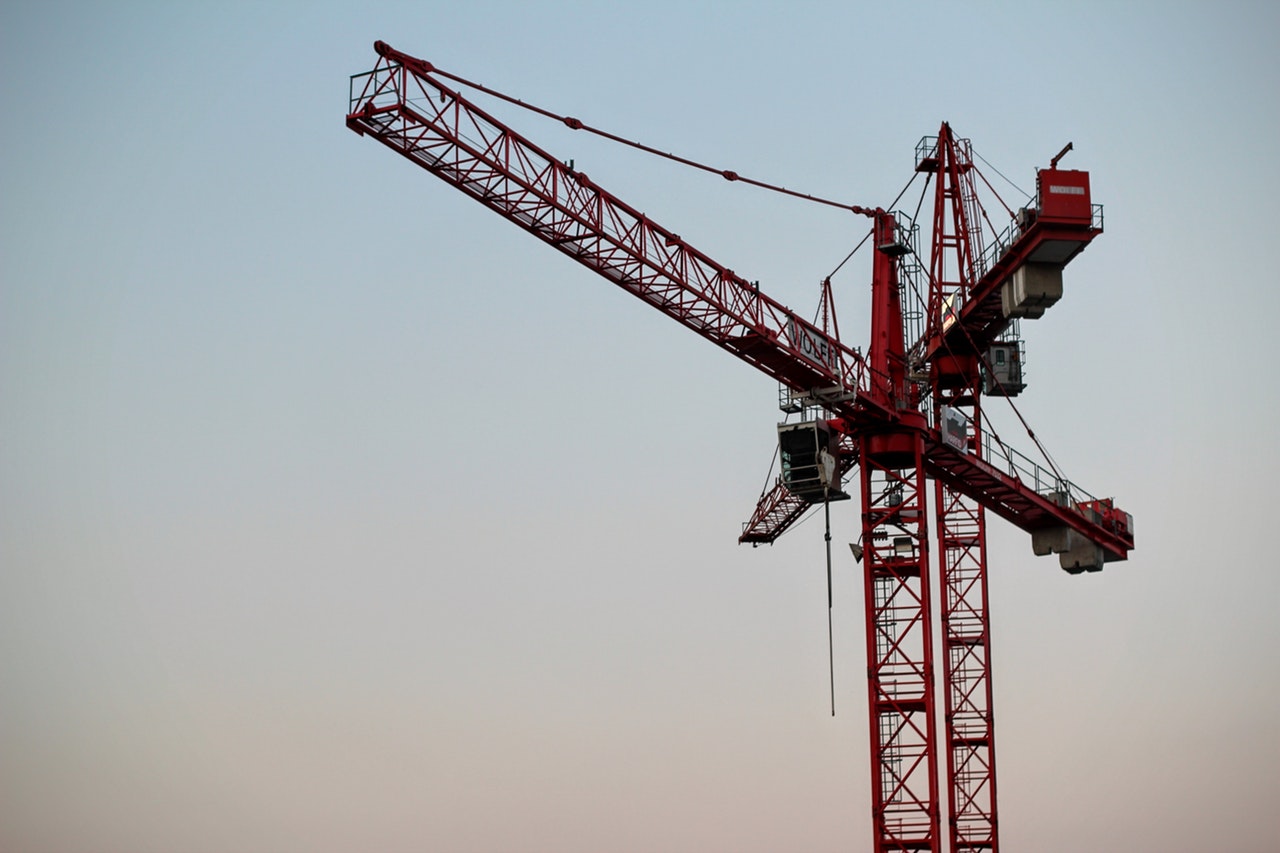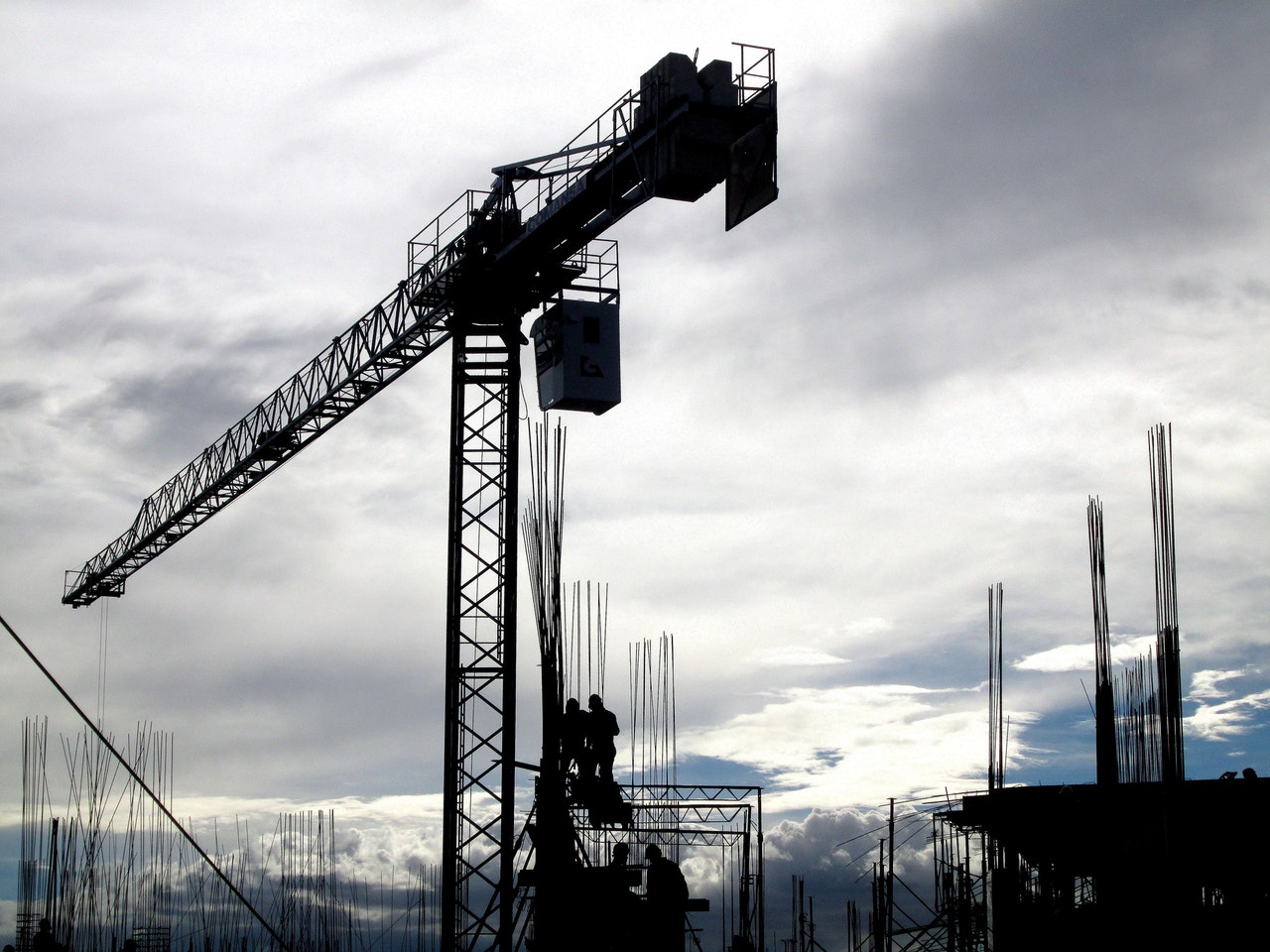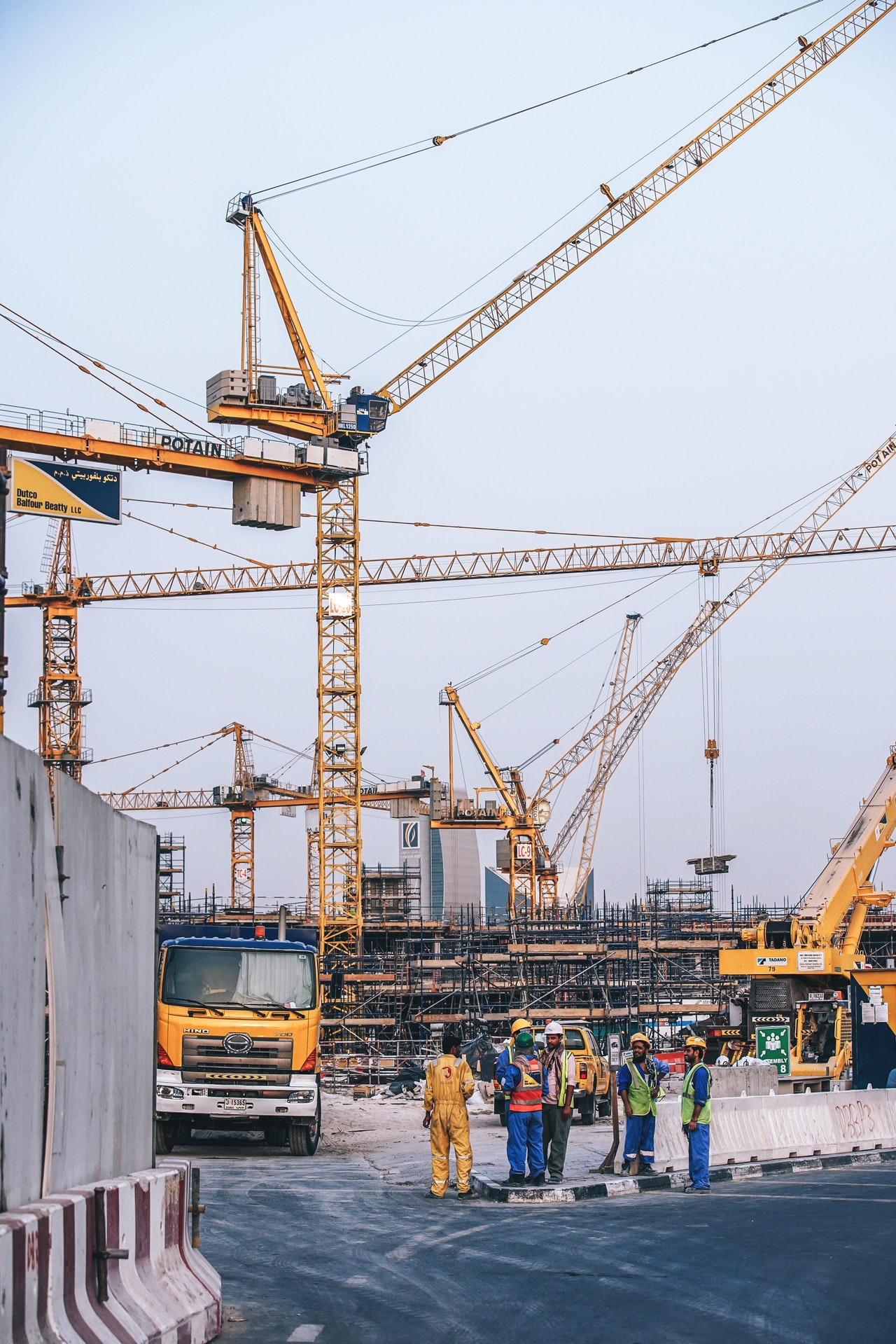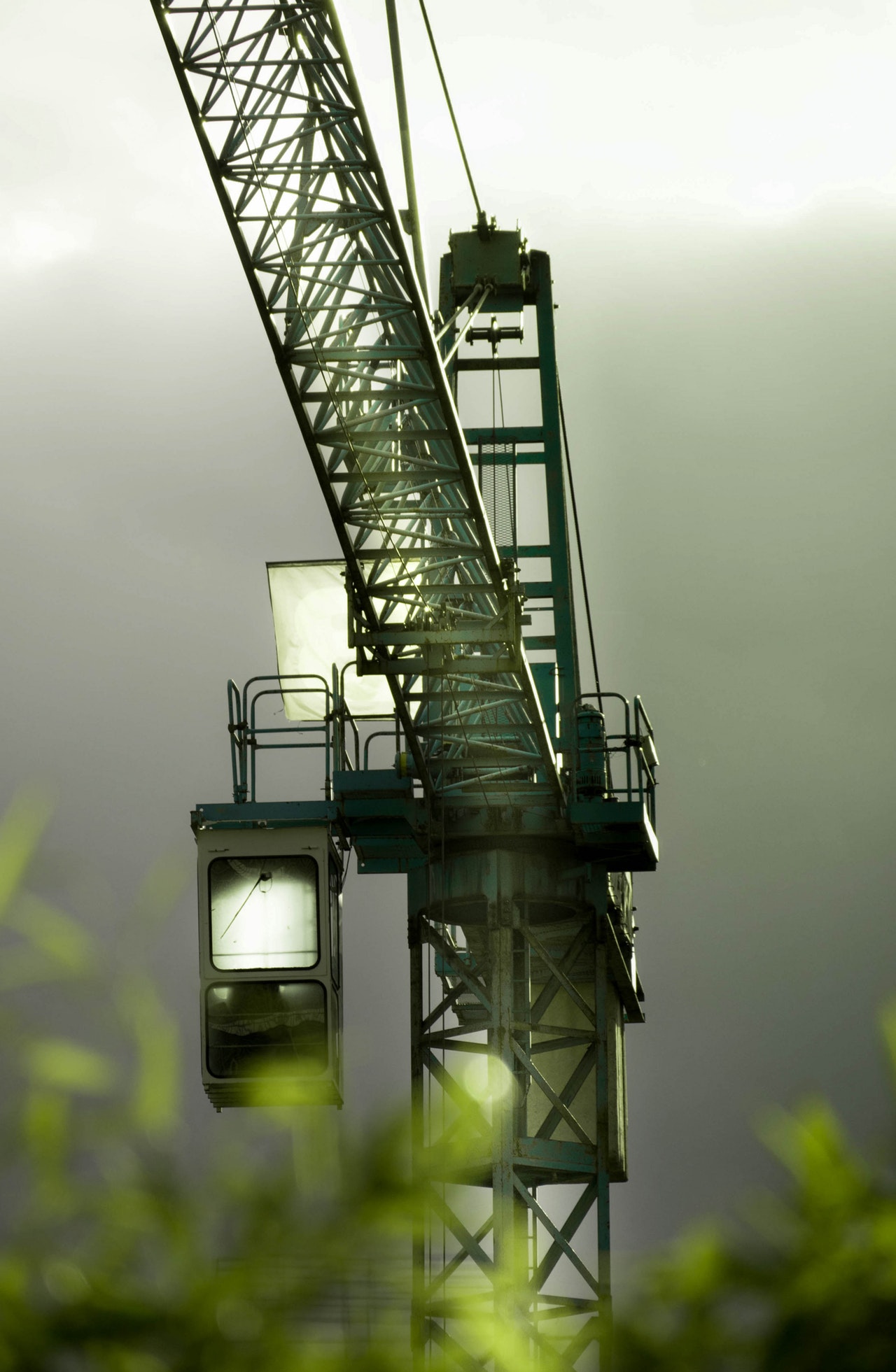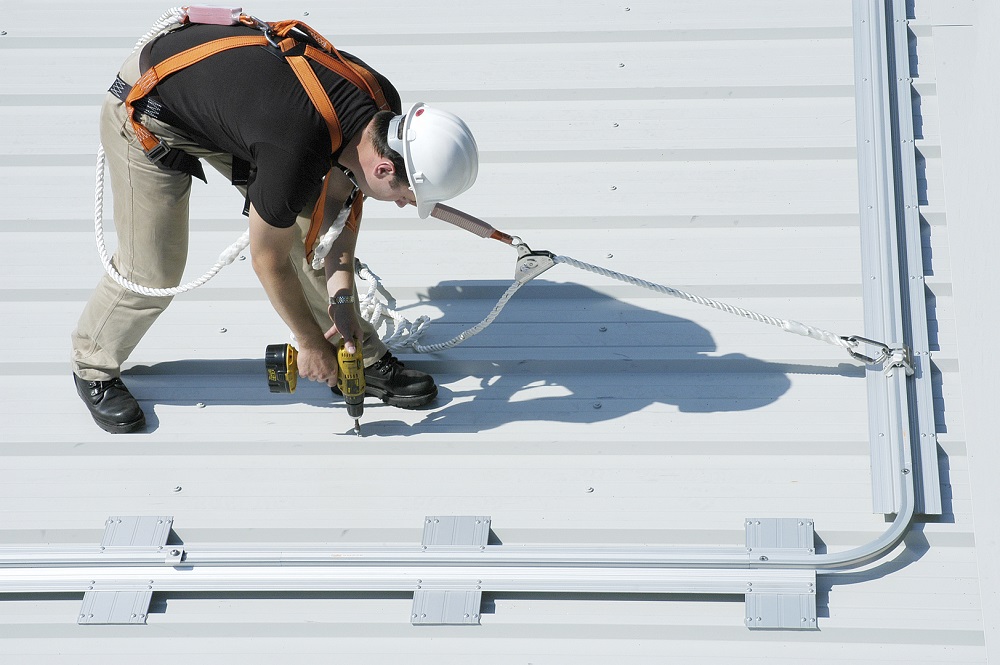Sent by Jason of riskatmedia
Every week at least one construction worker will die as a result of work-related injuries. Most of these fatalities involve skilled construction and building workers. Falling from a height is the greatest single cause of fatal injury, followed by being struck by a moving or falling object, contact with electricity, being trapped by something collapsing or overturning and being struck by a moving vehicle. In addition to this, over 3500 construction workers suffer major work-related injuries every year.
There are many dangers involved in working on any construction site. These hazards are real and often potentially life threatening, but we face them every day and sometimes forget how real and close they may be to all of us. This blog will cover most of the topics required for a Construction Site Induction.
Site Access
Access onto site should always be controlled for safety and security reasons. This may be by means of a signing in and out procedure, or by means of controlled entry technology. It is important that you use controlled entry procedures every time you enter or exit the site, this will allow management/security to determine exactly who is on site should an emergency situation arise.
Personal Protective Equipment – PPE
Personal protective equipment, or PPE, is an important means of reducing the hazards associated with work on a construction site. The minimum PPE that should be worn on site is a hard hat, appropriate gloves, safety footwear and a high visibility vest or jacket. This PPE should be worn on site at all times and may be supplemented by additional PPE, such as eye protection, ear defenders, dust masks and a safety harness, as stipulated in your risk assessment and method statement or permit to work. All items of PPE need to provide a good fit and be in good working condition, so it is important to check your PPE before you use it. PPE should be stored in a secure, clean and dry environment and any contaminated PPE should be removed carefully, cleaned or disposed of in a safe manner.”
Alcohol, Drugs and Medical Conditions
It is extremely important that you never come to work in possession of, or impaired by alcohol or drugs. These substances expose everyone on site to risks that are unnecessary and easily avoided. If you have a medical condition, have an active implantable medical device fitted or use prescribed or other medicines, you should report this to your manager/supervisor so that the details can be recorded for use in the event of an emergency. Any information that you provide should be treated in the strictest confidence.
Traffic Management and Pedestrian Walkways
Construction sites are busy and noisy environments with mobile plant and vehicles often in close proximity to pedestrians. For these reasons, designated pedestrian walkways and Egress Routes should been marked out on the site. Stick to these walkways whilst on site and don’t be tempted to take short cuts that might expose you to unnecessary risk. If you drive on to site, make sure that you stick to the speed limit, that you only park in designated parking bays and that you keep footpaths, access routes and pedestrian walkways clear. A copy of the most up to date traffic management plan may be displayed on site notice boards, along with other important safety information.
Welfare Facilities
Welfare facilities should be available on site and may include toilets, a restroom, a washroom and drying room and may include a canteen. Use these facilities responsibly by helping to keep them clean and tidy and recycling your waste as appropriate.
Vermin
Vermin are encouraged by the presence of food on site, so it is very important that you only eat in designated areas, that you dispose of food waste appropriately and that you do not take any food on to site. Vermin, such as rats, can spread diseases, including the serious and possibly fatal disease Leptospirosis.
Smoking, Music and Mobile Phones
Smoking and music are generally not permitted on construction sites, except in areas designated by site management. Mobile phones should only be used in lower risk areas, such as offices and welfare facilities, where you are safe and unlikely to affect other workers or operations. Mobile plant operators and drivers of site vehicles must never use a mobile phone whilst operating or driving.
Hazardous Substances and Materials
During your work you may use or come into contact with substances such as adhesives, paints or dust, which may harm you or the environment. If you use these hazardous substances you are required to understand the precautions that must be observed and the PPE that must be used, when transferring, mixing or using these substances. You are also required to understand the relevant storage, disposal and emergency arrangements. Information on the substance as well as an assessment of the hazards associated with its use should also be made available.
Any spills of fuels, oils or potentially hazardous substances, should be immediately contained using the appropriate spill kit and then reported to the supervisor or manager so the spill can be safely cleaned up.
Shots relevant to environmental management
To help reduce the effect of operations on the environment:
- Reuse and recycle as many materials as possible
- Compress waste and use waste segregation facilities where possible
- Dispose of waste responsibly and in accordance with legislation
- Damp down to minimise dust
- Turn off any plant or equipment not in use
- Ensure plant and equipment are well maintained
- Only use task lighting where necessary
- Turn off any taps and hoses when not in use and report any leaks
- Never pump or pour anything down the drains and only wash down plant and equipment such as cement mixers in the areas provided
- Where there are trees that need to be protected, please remain within designated work areas and avoid damaging tree routes
- Do not disturb nesting birds, newts, badgers, bats or invasive weeds
- Be aware of any habitats or historical remains on site.
Emergency Fire Procedures
Specific emergency procedures should be followed in the event of a fire. If a fire occurs, an alarm will sound. If you hear a fire alarm, stop what you are doing. Isolate any plant or equipment that you have been using and make your work area safe. Take the nearest escape route and follow a safe route to the nearest assembly point. Remain at your assembly point until you are given the all clear to return to work. Take the time to familiarise yourself with the specific emergency procedures that apply to the site, as well as the location of the assembly points.
Flammable Materials
To help prevent fires, flammable and combustible material should always be stored safely. Gas bottles should be stored in secure, vented cages or stores with appropriate warning notices. When working with gas, always ensure that you do so with adequate ventilation well away from any naked flames.
Accident Procedures
Construction site rules and procedures are designed to minimise the risks to the safety of everyone who works on site. But accidents may still happen. In the event of an accident, first aid facilities should be available on site. The names of all trained first aiders may be displayed on the site information board. If you are involved in an accident or a near miss, no matter how minor, please report it to the site management so that they can ensure you get the correct medical treatment and take steps to prevent the incident from recurring. If you witness a serious accident, get help and send someone for the site manager. Try not to move the injured person, but do make sure that they are safe.
Slips, Trips and Falls
Good workmanship and good housekeeping are practices that can help to prevent accidents and fires. Remember to route power and lighting cables so that they do not pose a potential trip hazard. Tools, materials and equipment should only be stored where indicated and should be stacked safely. All access routes and walkways should be kept clear of obstructions, especially those that are used by members of the public including children. Tidy and clean your work space throughout the day and never leave tools, equipment or materials where they could create a trip hazard.
Electrical Safety
All items of electrical plant used on site should carry a valid testing certificate or label to ensure Electrical Safety. If an item of plant does not carry a valid electrical testing label, is damaged or has a missing guard, then please, do not use it. If you use battery powered tools ensure that batteries are charged in a safe area and do not obstruct welfare facilities or create trip hazards.
Tower and Mobile Cranes
Tower and mobile cranes may be in use on site, so it is important that you do not enter unloading areas unless you are authorised to do so. You should also be aware of the fact that plant including cranes, telehandlers and powered access equipment should only be operated by individuals who are suitably trained and authorised to do so. If you are trained and authorised to operate plant, make sure that you carry out daily pre-use safety checks, that all safety devices and locking pins are in place, that the flashing beacon and any warning devices are working and that all-round visibility aids are in place and effective. Seek the assistance of a banks-man where visibility is limited and never leave the keys in an unattended machine.
Work Equipment
Whatever work activity you are carrying out on site you will be using work equipment. Only use the correct tools for the job and only use tools and other work equipment which you have been trained to use.
Risk Assessment, Method Statement, and Permit to Work
Before you undertake any job, make sure that your supervisor has briefed you, that you have a complete and valid risk assessment and that you are able to and do work according to your method statement. Be aware that new risk assessments and method statements may be required where jobs have changed or where new hazards have been introduced. In addition, certain work on site may require a permit or permission to work. These are issued after you have submitted a risk assessment and method statement for a particular job. If you are unsure whether a particular job requires a permit, ask your supervisor or manager.
Working at Height
You may remember that falls from height represent the single largest cause of death in the construction industry so Safe Working at Height is essential. It is therefore extremely important that you follow safe working practices when work at height cannot be avoided. Always use an appropriate working platform or work equipment whenever there is a potential to fall, which includes loading and unloading of vehicles. Always check your work platform before use, and be especially vigilant in windy, wet or icy weather. Remember, the use of a harness requires extra competence and is a last resort. If you operate powered access equipment you must have the appropriate training, certification and authorisation for that particular type of equipment. You should also carry out and record a daily pre-use inspection. Ensure that the access equipment is only used on stable ground, that it is not used in high winds, and never use it to lift or transport loads. In a boom type mobile elevated work platform you must wear a full body restraint harness secured to an anchor point by a suitable length, work restraint lanyard. Remember to park the mobile access equipment safely and to remove the key when the machine is not in use. The use of ladders and stepladders is discouraged and may be permitted only where the task is simple, of short duration, and no safer alternative is possible. Scaffolding, access ladders and mobile towers may only be erected, dismantled or modified by trained and competent persons. Remember to lock the wheels and fit the guard rails and to check that the scaff tag is in date and valid. Close all loading bay gates after use and never load materials onto guard rails.
Excavations and Quick Hitches
Safe working practices are essential when excavating. Check and mark the location of services, protect services with barriers or road plates, dig trial holes to confirm location and depth and avoid the use of mechanical equipment, picks and forks around pipes and cables. Don’t enter an excavation unless you have to. If you do enter an excavation, make sure that the sides are battered, stepped or supported, use a ladder to gain access and put barriers around the edges if there is a potential to fall.
Buckets can become detached from excavators during operations if the appropriate locking pin or device is not properly fitted. The excavator operator must ensure that the locking pin or device is correctly engaged and secure before commencing operations.
Manual Handling
Workers in the construction industry suffer considerably higher rates of manual handling related injuries than workers in any other industry. Help to protect yourself from injury by following good principles of manual handling. If you must lift a load, assess whether you can lift it alone or whether you need someone to help you. Remember to consider the environment in which you are working. Always adopt the correct lifting technique.
Your Health
Your health is as important as your safety. Vibration white finger and dermatitis are too often suffered by construction workers. Protect against these painful conditions by reducing your daily exposure to vibration, wearing the correct PPE and using barrier creams to protect yourself from contact with potential skin irritants such as cement. Remember to apply sun cream if you are going to be working in direct sunlight. Wear an appropriate dust mask and use vacuums rather than sweeping to clear dust. Check your tetanus vaccinations are up to date. Never touch discarded needles or syringes. Stop work and clear any area if you discover a substance you think might be asbestos. If you discover asbestos or discarded needles, please report this to site management.
Riskatmedia – Safety Videos

